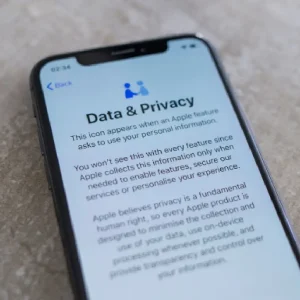
A wave of disruption has swept through industries such as energy and banking in recent years as start-ups use customer data and sleek digital interfaces to force incumbents to innovate. These industries have long been protected by high barriers to entry and sticky customer relationships, but in a new digital-first era, customers are more willing to look to plucky challenger providers that put their needs first. Now, UK start-up Cuckoo is hoping to replicate this success in the broadband market.
“Going through what we’re going through now, it [broadband] is just a fundamental requirement to operate,” says the start-up’s founder Alexander Fitzgerald. Cuckoo launched less than a year ago but has seen impressive growth in its customer base – more than 250% in 2021 – which Fitzgerald attributes to the pandemic making broadband tantamount to a utility.
Cuckoo was inspired by the success of challenger energy provider Bulb and works on the same premise: a simple, customer-friendly offering with fair pricing. Fitzgerald saw that, as in the energy market, there is an opportunity for smaller suppliers to compete by offering a better customer experience.
“When you change between them [the existing providers] it’s not like the wires actually change, the only thing that actually changes is the router that you get, the brand you interact with and the software,” he says. “Yet there’s widely varying pricing and customer service as well. We thought you could do something much simpler… [with] fair pricing and great customer service.”
Incumbent broadband providers score poorly for customer satisfaction: the average net promoter score (NPS), in the market, is only 12, according to Ofcom (scoring above 0 rates a provider as ‘good’ and above 50 as ‘excellent’). By contrast, Cuckoo claims its NPS was 78 during the first quarter of this year.
The reason for this is that incumbent providers still rely on a “legacy tech stack and legacy way of thinking”, says Fitzgerald, who envisions Cuckoo as a “consumer champion broadband company” striving to align its business model with customers’ needs and wants.
Disruption in the broadband market
This is not a wholly new concept in the broadband market, however, says James Barford, director of telecoms at Enders Analysis. “The existing operators have tried a whole bunch of things,” he says. “It’s a mature market and it’s difficult to come up with ideas… even if you are being quite aggressive on price, it’s hard to grow quickly.”
The largest four providers have held around 90% of the broadband market for the past decade. But there has been some disruption, says Barford, who points to a “big wave” precipitated by the unbundling of telecoms infrastructure in 2006 when the likes of Sky and TalkTalk entered the market: “There already have been new entrants into broadband [from] totally outside the telecoms market that have transformed it; BT is a very different company from what it was before they launched.”
The established companies have been making “great strides” with their digital offerings, but “their customer service systems have some legacy elements and are probably not as flexible or as modern” as they could be, says Barford.
This is backed up by the data: 83% of customers still interact with their provider by phone call rather than via a digital channel, according to research by Ofcom. With all providers seeing longer waiting times during the pandemic and more than one in ten calls ending before customers get through, the scope for digital innovation in customer service is clear.
For disruptors, the challenge is drawing in new customers, says Barford. “One way to try and compete in the market is by having a better interface, but it’s quite hard to rely on as a new entrant because it’s one thing having lower churn but how do you get the customers to begin with?”
The shift to digital over the past year could provide the impetus for the likes of Cuckoo to break into these markets, however. Almost one in six people said that they are more willing to switch providers in the next six months because of the pandemic, according to a survey by EY in May 2020.
“Many people have been beefing up their broadband access because now it’s critical to do anything,” says Thales Teixeira, co-founder of digital disruption consultancy Decoupling.co. “This has created opportunities for start-ups to come in and disrupt.”
Disruption is driven by changes in consumer behaviour, adds Teixeira, which means that Covid-19 has been a hotbed for innovation as people have rapidly adjusted their expectations and attitudes towards digital. “While in a few cases new technologies are the driving force, in the majority of industries technology is not the most important factor, it’s the customer that’s behind the digital disruption,” he says. “There are particularities depending on the industry, but the universal elements are customers wanting cheaper, more convenient and faster products and services.”
Consumers choose broadband providers in much the same way as they shop for deals in any other sector, says Teixeira; so, for new entrants like Cuckoo aiming to win customers with flexible subscription models and better customer service by piggybacking on the Openreach network, the pandemic offers fertile ground for disruption.
How should the broadband giants react to digital disruption?
As in many other industries, the pandemic has accelerated digital transformation across telecommunications: three-quarters of telcos have accelerated their digital plans because of the pandemic, according to a report by Upstream.
But established companies will only begin to materially react to new entrants once they start to see a dent in their business, says Teixeira. “The start-ups are eating around the corners of the big companies, just nibbling away,” he says. “It doesn’t affect their revenue sources, so it’s not front and centre on their radar.”
If it does start to affect their business, they will likely react by trying to match prices, replicate the start-up’s offering or buy it up, which is the wrong approach, says Teixeira – like established players in other industries, the telecoms giants innovate to increase profits and market share; instead, they should try to replicate the kind of “customer-centric innovation” driving the market disruption.
That is easier said than done, however. In large companies, there is an “internal tension” between the innovators that are trying to replicate what the start-ups are doing and the established business model, says Teixeira. “In broadband, they have virtually not made progress [because] they’re all waiting for the new wave of internet speeds.”






